If you are like most people, you have some piece of furniture with broken wood in need of repair somewhere in your home. Well, pull that thing out of storage, because I’m going to show you how to fix it in a jiffy.
Before we get started, you’ll want to invest in a couple of these. Just do it – you will be surprised how often you need them. These Irwin clamps (affiliate) are popular for a reason.
If the break is a clean one you won’t need to use filler, just squeeze a tiny bit of wood glue into the crack and clamp the sides together tightly. You should be good to release them in about half an hour, but I will often leave them for 24 hours just to be sure.
That method worked great for this headboard, which is my all time favorite hack fix with a little Superman duct tape.
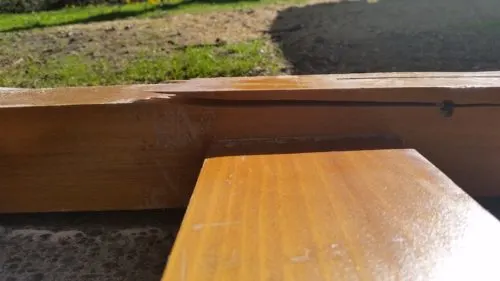
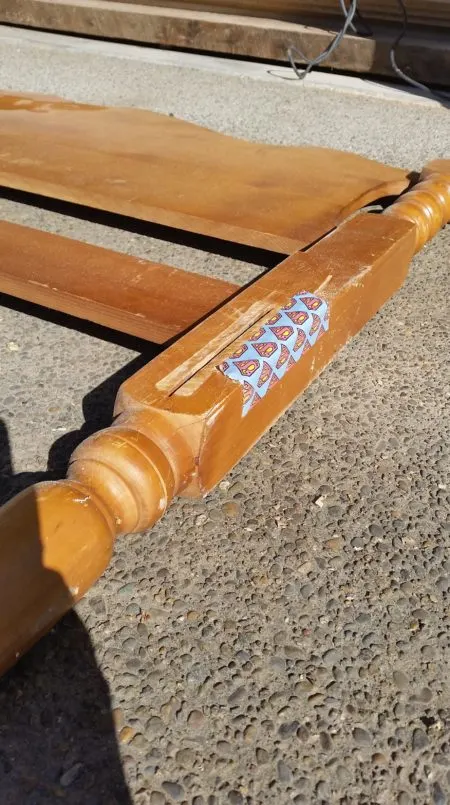
Here is that leg after gluing, clamping, and sanding.
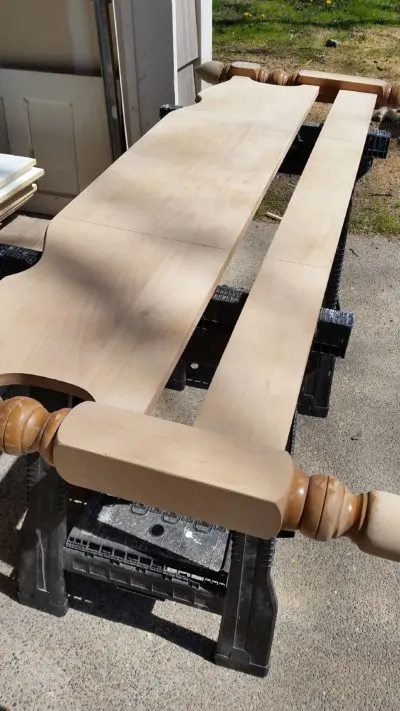
Actually, the angle on that is all wrong. But it doesn’t matter because it was invisible after that anyway. Like it never happened. Sorry, Superman.
Now, if the broken wood is not so clean as in the above example, you will need to do a little more work to fill the gap. Here is how to do that.
*This post contains some affiliate links for your convenience. You can read my full disclosure policy here.
Three Ways to Fill Broken Wood
The first substantial piece of furniture I built was a desk. I don’t recall how, but I ended up with a pretty good size ding out of it that had to be filled. Being a complete novice, I grabbed some wood filler from the store. I filled the hole, let it dry, and then sanded it as smooth as possible. It said it was stainable, so I assumed it would blend well enough. Annnnd, nope. Not so much.
Throw out the filler. Get the glue. Because our first method is one woodworkers have been using since the ancient days of China. Okay, I made that last part up.
Sawdust and Glue
Have a sander? Open up the dust collector and pour some out in a container. Mix in a good size portion of glue – somewhere around a 50-50 portion (I use this glue, and it is freaking the bomb). It should turn pretty thick and very sticky. About like so:
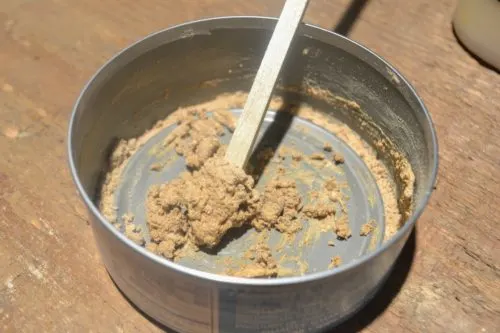
The finer the better with this homemade filler. I always try to use the wood from the project itself so the color tones match. This also works with epoxy and sawdust. A word of caution, however: Adhesives don’t take on stain, so be sure to thoroughly remove any excess. If you want to see more of this method, this is a good article.
One last note, this is the method for you if you are staining your project. The other two methods are not suitable for staining.
Joint Compound, aka mud
Joint compound is really inexpensive, making this a terrific solution and one of my favorite tricks. This is really only best for a light skim coat to finish off spaces that are either not large or are mostly filled already. Case in point, I love it for finishing pocket holes. I filled these holes with some sawdust and glue mixture, then finished that off after it dried with a light skimming of joint compound. Since these pocket holes show I wanted them to, well, not show.
I have also used this trick when I am bringing together two pieces of wood and want them to be nearly seamless, such as in building these drawer fronts.
Joint compound is ideal for finishing because it is very smooth and easy to sand. I used it for finishing the mdf on our new fireplace facing, and it did a marvelous job.
Now, I realize that none of those examples involved actual broken wood, but I only had so many broken things to repair, so work with me here.
Bondo
Get a respirator mask, because this is one powerful solution that comes with an equally powerful smell. Bondo is used to do automotive repairs, so that should give some idea of its durability. It sands every bit as smooth as joint compound, and can be used to fill larger areas than the mud can.
Bondo comes in two parts, the filler and the activator. Mix the two according to the directions in whatever amount you require, and fill.
The toddler bed I recently finished had a major break that had to be repaired, as well as annoying large screw holes that were less than aesthetically pleasing.
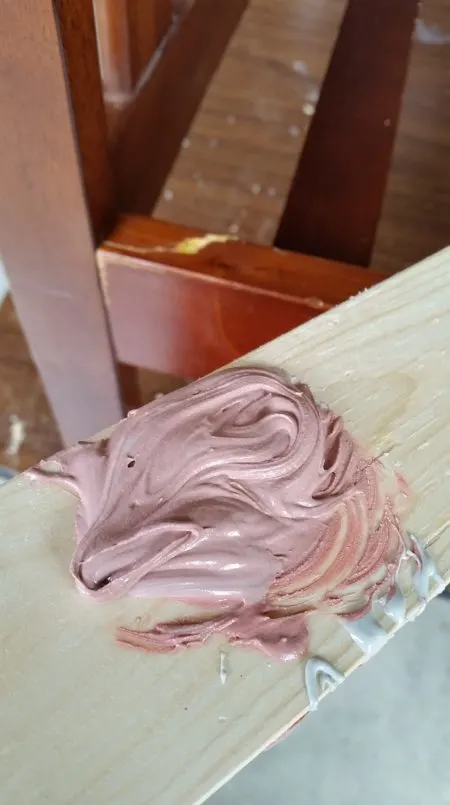
First I glopped it into the break. I should note that previous to this I filled it with glue and clamped. It dried and held fine, but still looked pretty bad because of how jagged the break was.
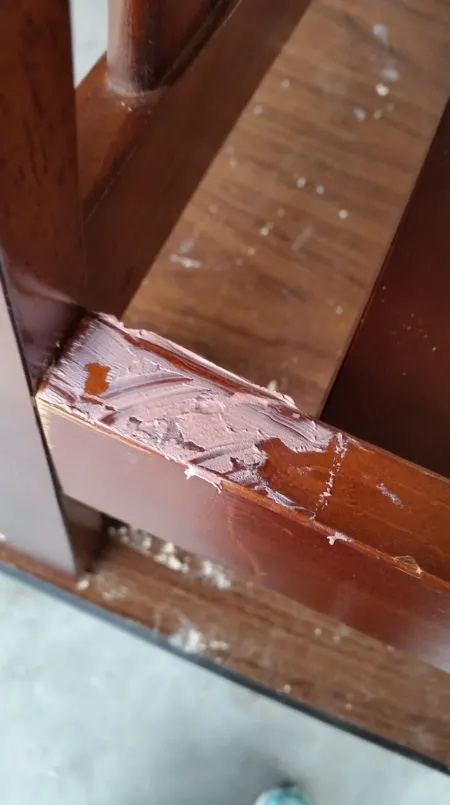
After sanding:
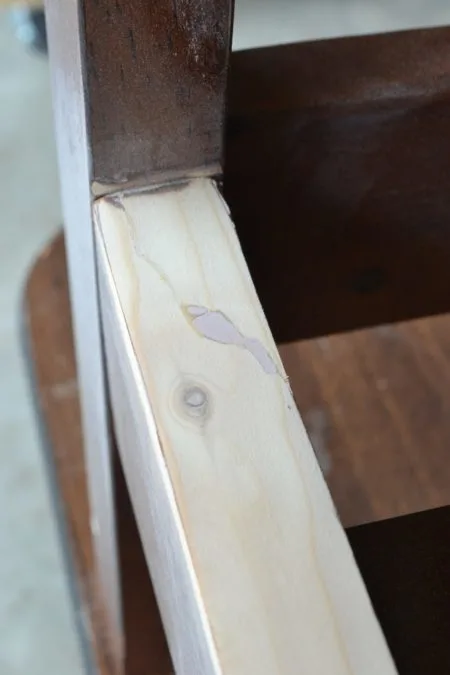
After painting the spot is impossible to find.
And here is how those holes looked with some Bondo. This is with just one of them finished so you can see what the others looked like.
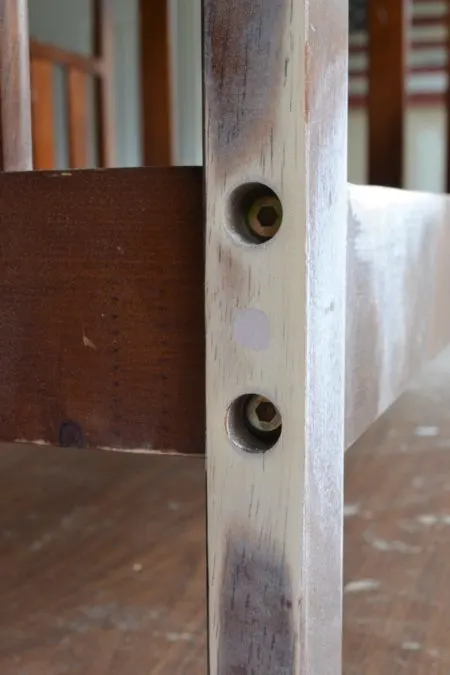
Here’s the finished version. (It’s the leg in the foreground of the photo.)
There you have it, three methods to fill gaps in wood. It’s not a glamorous topic, but it is a useful one. Happy fixing!
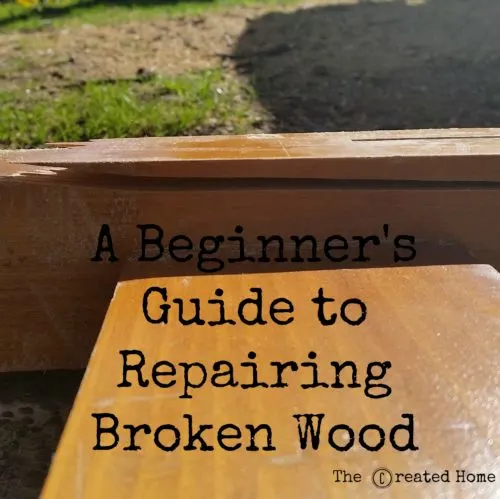


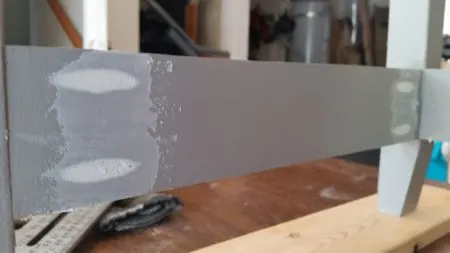
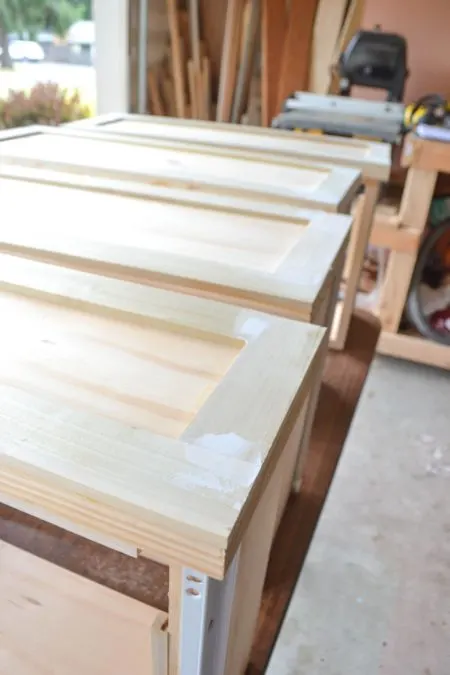
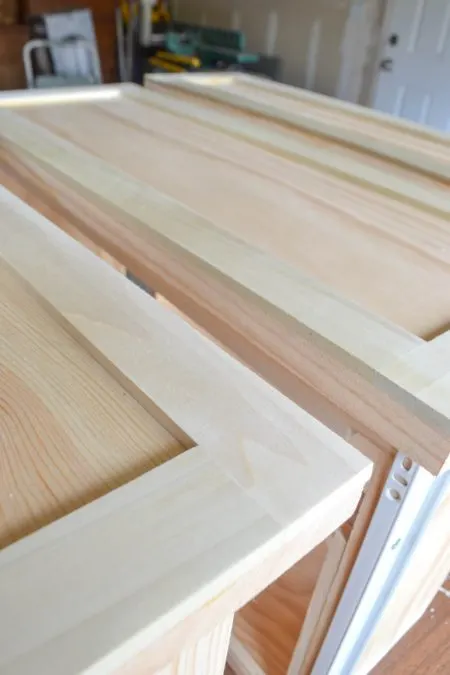
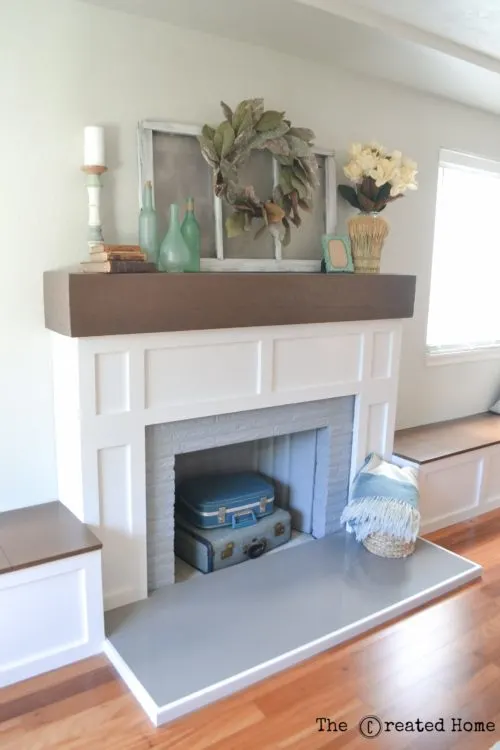
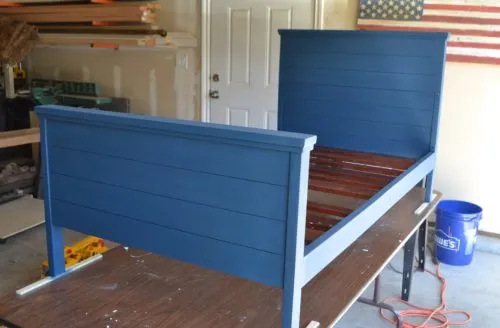
Thomaskellygray
Sunday 28th of February 2021
this is the best guide for broken wood repair thanks author great work
Sarah
Wednesday 31st of March 2021
Thank you!
Diane
Friday 18th of September 2020
I have a headboard that is broken into about 4 splits (at the same place on the leg). I know how to glue and clamp it , and since i have all the wood that split off, it will LOOK fine. However, the breaks are around the slot that holds the sideboard. How can o strengthen it so it holds the weight of the sideboards, box spring, mattress, and people?
Sarah
Thursday 1st of April 2021
It is difficult to say without seeing it. If you are concerned that the glue bond will not hold (glue is pretty strong!) you can look into bracing it with secondary materials. But again, I can't be too specific.
Joni
Friday 7th of September 2018
Do you have any thoughts on fixing decorative molding on the front of a drawer that has been dinged or scraped. I just bought my first piece of furniture to redo, and it's in pretty good shape except for a split in one leg and scraped molding. It feels like I would need to rebuild the top of the molding, if that makes sense. It would be easier if I could include a picture but I don't know how to do that on here. I've never use Bondo before, but from what I've seen it is buildable. I'm just not sure I could send it back down to the correct shape once I glob it on the molding. I'm afraid to even start working on this furniture before I have a solution to this so it's just sitting in my garage!
Sarah
Friday 23rd of November 2018
It's really tough to say without seeing it, but like you said, Bondo may be a good option? What is the age of the piece? If it's old enough an okay solution can be to let the dings stay as a mark of authenticity, if you will. If you want it looking new you can certainly look at replacing the molding piece altogether, which is definitely easier than attempting to rebuild it. I hope that helps!